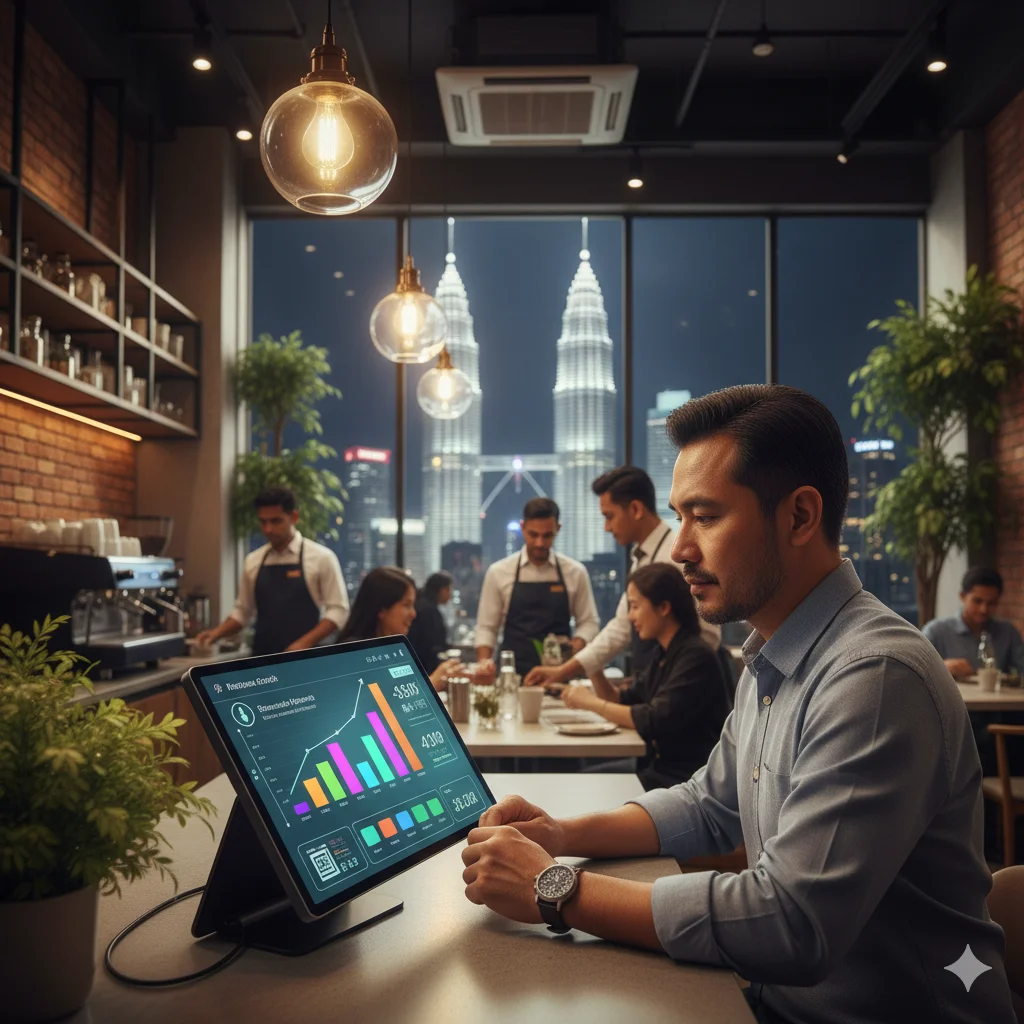In the contemporary food and beverage industry, menu management is a critical strategic lever. A Point-of-Sale (POS) system is no longer merely a transactional tool—it functions as the operational hub that ensures menu accuracy, optimizes sales, and enhances the customer experience. According to a 2021 study by the National Restaurant Association, restaurants that leverage integrated POS systems see a 15–20% increase in order accuracy and operational efficiency.
For cafés and restaurants operating in competitive markets, particularly in Southeast Asia, POS-driven menu management enables seamless updates across in-store terminals, digital menu boards, and online ordering platforms such as GrabFood, FoodPanda, and UberEats.
This article explores the strategic advantages of POS menu management, its key features, actionable insights, and best practices for improving operational efficiency and profitability.
Why Menu Management Matters
Menus are dynamic assets that require constant adjustments: seasonal drinks, weekend brunch specials, and limited-time promotions. Manual updates are fraught with inefficiencies:
- Printing new menus is costly and time-consuming
- Miscommunication between staff and kitchen increases order errors
- Customer dissatisfaction arises when items show as available but are sold out
A POS system addresses these challenges by:
- Updating menu items in real time across all sales channels
- Maintaining price accuracy and promotional consistency
- Reflecting changes instantly on dine-in, takeaway, and delivery platforms
Example: A café launching a seasonal Pumpkin Spice Latte can update the POS once; the new item appears on all digital menus and delivery apps within seconds, eliminating manual errors.
Efficiency Gain: Immediate, accurate menu deployment enhances customer trust and reduces operational bottlenecks.
Key Features of POS Menu Management
-
Easy Item Addition & Removal
Adding or removing items should be simple and fast. A robust POS system allows managers to:
- Add dishes with full descriptions, prices, and images
- Categorize menu items (breakfast, mains, desserts, drinks)
- Remove unavailable items instantly to prevent customer disappointment
Benefit: Staff can focus on service rather than correcting menu errors, enhancing operational reliability.
-
Pricing Control & Promotions
Pricing strategies impact revenue and customer engagement. POS menu management enables:
- Automated scheduling of happy hours and special promotions
- Execution of combo deals or meal bundles
- Dynamic pricing for seasonal events or festivals
- Consistency across in-store, website, and third-party delivery apps
Example: A café can run a “Buy 1 Get 1 Free Latte Monday” promotion automatically through the POS system without manual price adjustments.
Impact: Increased sales, higher promotional efficiency, and minimized human error.
-
Menu Customization & Modifiers
Customer personalization is now expected. A POS system ensures:
- Clear selection of modifiers by servers (e.g., extra cheese, almond milk)
- Precise kitchen instructions delivered via Kitchen Display Systems (KDS)
- Automatic calculation of additional charges for add-ons
Outcome: Fewer errors, higher customer satisfaction, and maximized revenue from add-ons.
-
Integration with Online Ordering Platforms
POS systems streamline omnichannel menu management by integrating with:
- GrabFood, FoodPanda, UberEats for Southeast Asia
- Website ordering widgets
- Digital menu boards within physical stores
Benefits:
- Real-time updates prevent customer frustration
- Consistent pricing and menu visibility across channels
- Reduced manual data entry improves operational efficiency
Example: Sold-out items are automatically removed from all platforms, preventing discrepancies and lost sales.
-
Menu Reporting & Insights
Advanced POS menu management provides data-driven insights:
- Track top-selling items and identify underperformers
- Analyze popular modifiers to optimize offerings
- Guide menu engineering decisions
Example: If 70% of burger orders include extra cheese, consider launching a “Cheese Lover’s Burger” to boost average spend.
Efficiency Gain: Informed menu decisions drive profitability and customer satisfaction.
Benefits of Centralized POS Menu Management
- Reduces Errors: Prevents wrong orders and mismatched pricing
- Saves Time: Real-time updates replace manual menu edits
- Boosts Sales: Facilitates strategic promotions and upselling
- Enhances Customer Experience: Reliable menu information builds trust
- Improves Operational Efficiency: Kitchen, front-of-house, and delivery channels stay synced
- Supports Omnichannel Growth: Ensures consistency across dine-in, takeaway, and delivery
Advanced Menu Management Strategies
To maximize POS capabilities, restaurants can adopt:
- Highlight High-Margin Items: Use analytics to promote profitable dishes
- A/B Test Specials: Evaluate different promotions for revenue impact
- Seasonal Menu Cycles: Rotate offerings quarterly without reprints
- Upsell with Modifiers: Track popular add-ons and suggest them to customers
Pro Tip: Combine POS analytics with menu engineering to adjust pricing and maximize profit margins while meeting customer preferences.
Common Pitfalls to Avoid
Even with sophisticated POS systems, operators may encounter issues:
- Failing to update online menus → leads to customer frustration
- Overloaded menus → overwhelms staff and diners
- Inconsistent pricing → promotions applied inconsistently across channels
- Ignoring analytics → missed opportunities to remove underperforming items
- Undertrained staff → system features go unused
Avoiding these mistakes ensures that POS investments translate into measurable operational improvements.
Case Study: Small Café vs. Multi-Location Restaurant
Small Café: Uses a cloud POS to update a single terminal with GrabFood integration. Seasonal drinks and promotions update instantly, saving hours per month.
Multi-Location Restaurant: Uses enterprise POS (e.g., Slurp POS) to update HQ menus that cascade to 10+ outlets and delivery platforms. Promotions and pricing remain consistent, enhancing brand integrity.
Conclusion
Menu management is the strategic heart of a restaurant or café POS system. Effective POS-driven menu strategies ensure:
- Accurate and flexible menus across all channels
- Consistent pricing and promotions
- Smarter inventory and kitchen workflows
- Data-driven decisions for menu optimization
Integrating menu management with inventory control amplifies efficiency and profitability.





